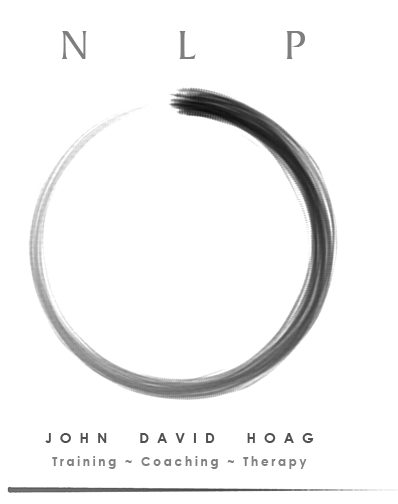A Practical Model for Healthy Self-Organization
Gregory Bateson developed the idea that natural hierarchies occur in our processes of thinking, learning and communication. Subsequently, Robert Dilts applied Bateson's concepts to the development of what Dilts termed 'Neuro-Logical Levels'.
While there is some controversy in NLP about whether Dilts' levels technically fit Bateson's specifications, for practical purposes we need only ask how the model is useful in specific contexts. Let's take a closer look.
The NLP Neuro-Logical Levels:
Spirituality
Identity
Beliefs and Values
Capabilities
Behaviors
Environment
The basic idea of this model is that -- whether in verbal thinking, visual or auditory or kinesthetic representations, learning, or communication -- as our attention moves up the levels, more of our neurology becomes involved.
Neuro-Logical Levels in Action
We have probably all seen the difference in responses between a person who has had a behavior challenged, such as whether the way they are doing something is the most effective way, and a person who has had a core belief or value challenged.
In the latter case we will likely observe a much greater scope of neurological self-organization in response. The skin may flush, the eyes may bulge or dart or narrow, posture and breathing and heart rate and blood pressure and perspiration may all be affected, as well as different activating systems such as fight or flight, constellations of memories, anticipated outcomes, etc.
Whereas for the person whose behavior is simply challenged, unless that person has a higher Neuro-Logical Level confused with it, his response will be significantly smaller in scope.
Confusion of Levels
Confusion of Neuro-Logical Levels is a primary cause for significant troubles which many people experience.
Imagine that I stub my toe and yell, "OUCH!!! That hurts!" then I slap my forehead and say, "What an idiot I am!" That would be an example of confusing one Neuro-Logical Level with another: Behavior with Identity. I have gone, in one quick step, from a mistaken behavior to a negative identity, something of a much higher order with broad implications.
Were I to make the same behavioral mistake and keep my response on the same behavioral level, my results would not only be less negative, but they would also be confined in scope and potentially more useful. "OUCH!!! That hurts!" followed by, "I need to move that chair, or watch where I'm stepping." -- A behavioral mistake, and a Behavior Level response.
Neuro-Logical Levels and Learning
Suppose I'm teaching a child how to play guitar and, every time he tries to play a D chord, he has trouble getting his fingers into position on the strings. I could give him behavioral feedback and say, "You're doing it wrong." That would be keeping my comment on the same Neuro-Logical Level as his behavior, but it's not very high quality information. He already knows he's having trouble doing it; and what I have just told him only confirms that out of all the possible ways there might be to do it, the way he is doing it is not the best way.
Or I might give him higher quality behavioral feedback and say something like, "If you picture your fingers going to the right place, move this finger first and let the others follow, that might work better for now. Give it a try." In this case, I gave him something specific to change, keeping my feedback on the same Neuro-Logical Level as his actions.
On the other hand, if I had my Neuro-Logical Levels confused with each other, I might give him feedback like this, "You are a lousy guitar player." That is an Identity level statement that will have widespread effects. The child may derive from that that he's not good person, or that he's inadequate, or that there is some reason to be ashamed of himself.
Cascading Neuro-Logical Levels
One of the characteristics Neuro-Logical Levels is that responses tend to cascade down them. This may not be true in every case, in every way, but frequently the effect can be observed over time.
For example, if that child I was teaching to play guitar looks to me for identity sponsorship as he creates his definition of who he is, and he believes me that he's "a lousy guitar player," he is very likely to self-organize any number of things on lower Neuro-Logical Levels as the effects cascade down.
At the values level, he may decide that music, or even arts in general, are not important. Or he may conclude that he lacks the capability to learn easily. From there he will make choices about which capabilities to develop and which to avoid. Those choices will naturally affect the activities he pursues and other types of behavior he initiates. And those behaviors will have an effect on his environment, the people around him, and their response, in turn, to him.
NLP Process Work with Neuro-Logical Levels
NLP processes which experientially train our awareness to distinguish between Neuro-Logical Levels, to keep them well sorted, and to relate them to one another in positive, self-affirming, life-affirming ways, greatly enhance the health of our thinking, emotions, decision making and communications.
The Neuro-Logical Levels model can be powerfully applied, as well, to Generative NLP processes that are designed to multiply our resources, find and maintain our center, explore and strengthen our sense of self, self-esteem, and self confidence, and strategize change levels for areas of our lives in which we want to make significant progress.
Western vs Eastern Neuro-Logical Levels
John Grinder, one of the co-creators of NLP, has suggested that NLP might develop a process by which each person's self-organization of Neuro-Logical Levels might be elicited and used in ways tailored to that individual. That is an intriguing suggestion.
At the top levels of Spirituality and Identity, an Eastern model of the world such as Hinduism, for example, might prefer to have them both located at the same level, with, perhaps, Purpose and Mission at the next level; or perhaps have only five levels, with Beliefs and Values directly beneath Spirituality and Identity.
It will be interesting to see how this model evolves in the years ahead. Meanwhile, it remains a useful model in NLP Training, Coaching and Therapy sessions for students, clients and practitioners, alike.
. . .


